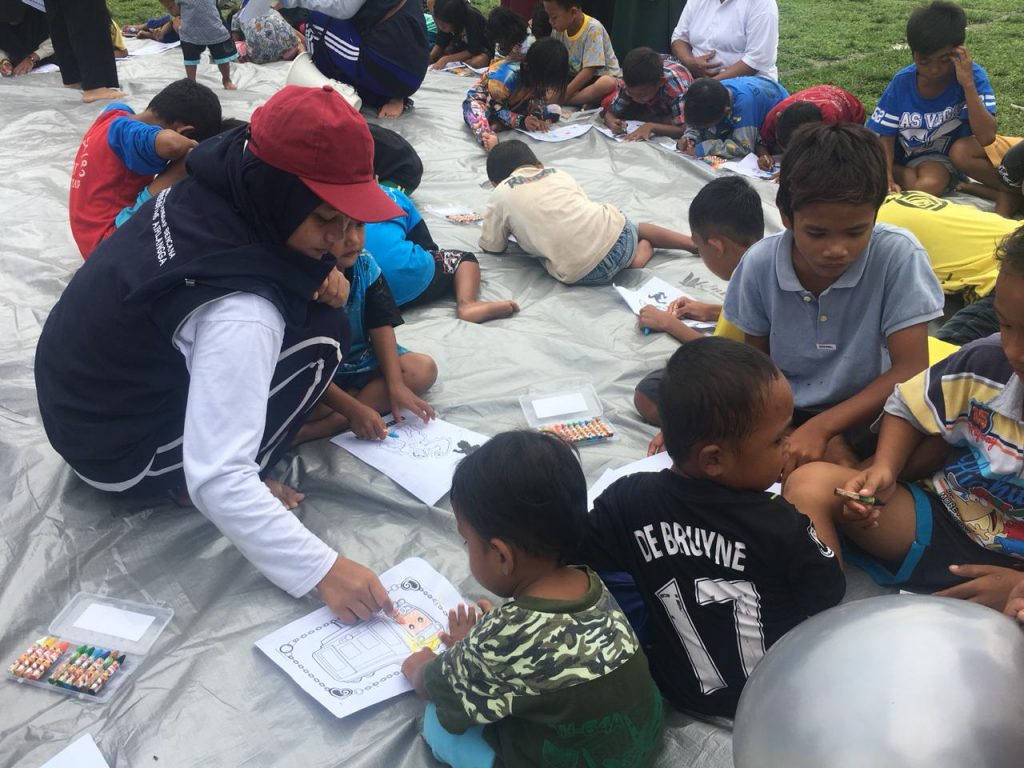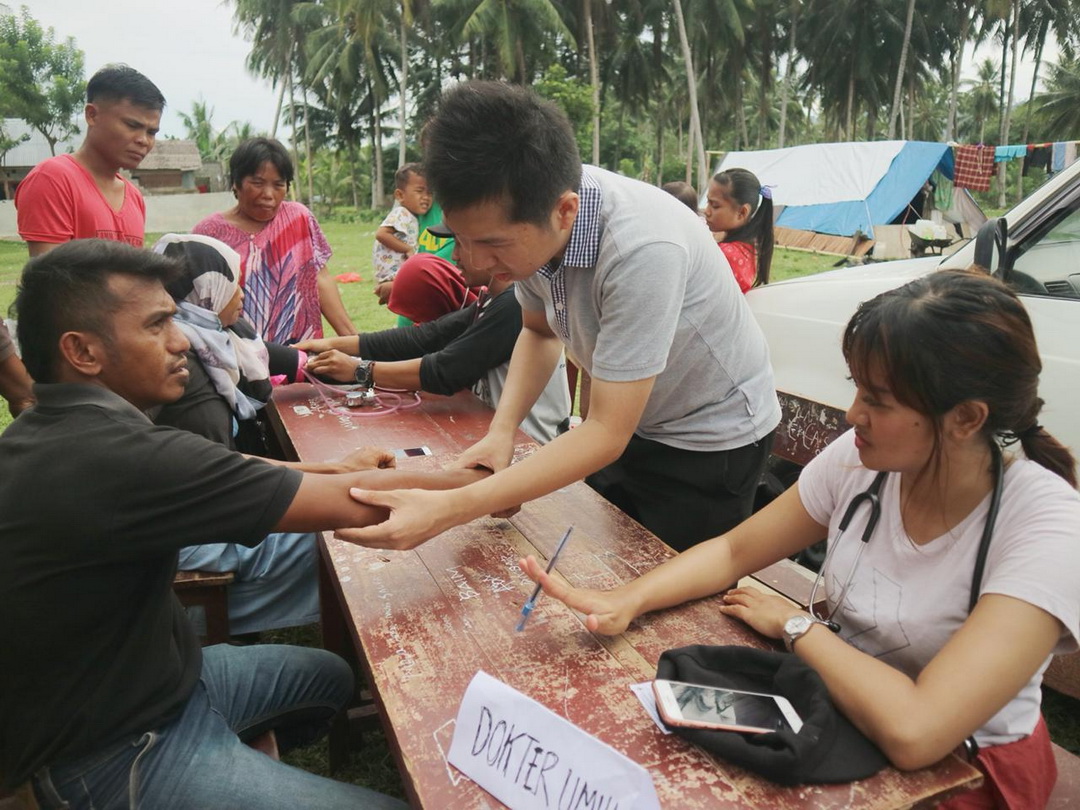UNAIR NEWS – One month after the earthquake, tsunami and liquefaction disaster in Palu, Donggala and Sigi, Central Sulawesi, Ksatria Airlangga Hospital (RSKA) continues its healthcare services. The hospital is manned by doctors from FK UNAIR alumni and volunteers from other academic communities last week, from Monday, October 22 to Friday, October 26, they provided treatments to at least 400 more patients.
The number could increase even more if the information on free treatment for community had been distributed properly and normally. But the reality is constrained due to limited facilities.
The majority of the patients were the locals survived from the disaster on September 28, 2018. They were patients undergoing treatment / follow-up care, outpatients, and / or patients affected by the disaster. It was confirmed by Suwaspodo Henry Wibowo, dr., Sp.And., MARS., Secretary of Ksatria Medika Airlangga Foundation (YKMA), on Sunday October 21.
As reported, even though the Floating Hospital “Ksatria Airlangga” (RST-KA) since Thursday, October 18 has transferred its humanitarian service from Donggala to Maluku, health assistance for disaster victims in Palu from Universitas Airlangga academic community still continues through Field Hospital around Donggala.

Compiled from the daily report of Team Ksatria Airlangga Hospital written by dr. Intan, dr. Ragil, dr. Winni, dr. Nita, dr. Monica, and dr. Aga, the health service was provided at the Refugee Health Command Post in Batusuya Field, Sigi Village, Saliru Village, Saloya Village, Kaliburu Village Health Center, and trauma healing in Seliru Village.
“Every day the RSKA Team serves about 60 patients on average from various complaints of pain,” added dr. Henry.
The service at the Evacuation Command Post in Batusuya for example, dr. Intan noted on Sunday, October 21 that there were 51 patients. Most of the patients were adults, but there were also children, toddlers, teenagers and the elderly.
Most of complaints / public health disturbances recorded from various health service posts were myalgia or popularly called muscle pain, body aches that are thought to be due to post-disaster activities. There were at least around 20% of patients with myalgia complaints .
Beside myalgia, five other complaints included ISPA (Acute Respiratory Infection), HT (hypertension), dyspepsia or ulcer (pain in the upper gastrointestinal tract), gastritis (gastric inflammation), digestive disorders, dermatitis (skin inflammation), etc.

Various examinations and treatment efforts were provided by Ksatria Airlangga Hospital volunteer team consisting of doctors from Universitas Airlangga Faculty of Medicine, nurses, psychologists and pharmaceutical experts from UNAIR, as well as representatives of Student Executive Board (BEM) and Mahagana UKM UNAIR. For example conducting health checks and giving medicines, giving additional nutrition, education and socialization, joint exercises for adults in refugee camps, and trauma healing for children.
One of the obstacles was limited laboratory facilities that slowed the examination. It also hampered UNAIR volunteers in their efforts to motivate economic recovery for fishermen due to far distance. Besides, there were also locations of Poskesdes that are far and difficult to reach, limited facilities , the difficulty of getting skin medicines, and there are patients who should be referred but refused. (*)
Author: Bambang Bes





